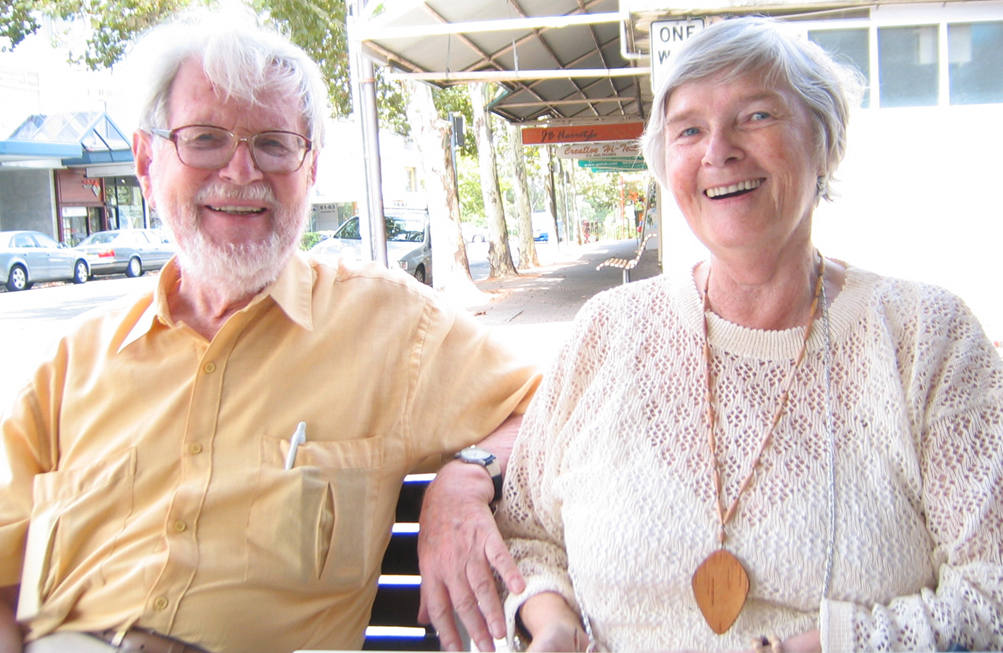 |
|
|
SPEECH FOR LAUNCH OF
“BONEGILLA’S BEGINNINGS”
Tiiu Salasoo
History House
Sydney, NSW
6 March 2008
On the program for this launch, I was described as the youngest Estonian on the first boat that brought displaced persons after World War II from Europe to inhabit Australia, which happened to be short of people, especially workers. Yes, I was 15 years old, and I was called the baby by the other Estonians on board.
Some people here today may not know the meaning of the term displaced persons, or DPs as they were also called. It meant non-German people, who happened to be located in Germany during the war, but who found it impossible to return to their home countries when the war ended, because they feared persecution, imprisonment, even death by the powers there—these people were political refugees.
A 15-year old political refugee, you might ask. Yes, my journalist father had already been arrested and sent to the Arctic Circle during the first Soviet occupation in 1940. Consequently my mother and I were on the list for the first deportation that took during one night 60,000 men, women and children on the long journey to Siberia. By a lucky fluke we escaped it. But we could not afford to stay in Estonia when the Soviet forces re-entered in 1944, nor could we go back when the war ended. There were hundreds of thousands of such people, mainly from Soviet-occupied countries, living in DP camps in post-war Germany. With their hopes of retuning to their homes slowly diminishing, their eyes turned to establishing new homes in the New World countries: in USA, Canada, South America and Australia.
Yes, I was 15 years old, at the age when compulsory schooling finished in Australia, so it was possible to label me as a potential worker. Although the rules stated that the minimum age to immigrate to Australia under this scheme was 18, I was allowed to come because my mother asked for her daughter to accompany her. We were both examined medically as well as in relation to our characters, and we were found to be fit to be classified as single female workers.
It might be said that I made my first acquaintance with today's esteemed author, Ann Smith, in the train that took us to the holding camp, prior to boarding the ship "General Stuart Heintzelman" in Bremerhaven. I did not know it, of course, but the attractive lady who shared a compartment with us and who repeatedly asked us to lift her suitcase down and put it back up, was actually pregnant with Ann.
Ann has mentioned in her book the journey of the "First Transporters" (one of the names by which we came to be called) on the American troopship "General Stewart Heintzelman", the short stay at Graylands camp in Perth, the terrible, stormy trip across the Bight on the HMAS "Kanimbla", our arrival at Melbourne and train journey to Bonegilla.
She has also written about our stay at Bonegilla, but I'll add now some of my own vivid memories of that camp.
When we decided to come to Australia, many people left their warm clothes behind, as we expected it to be a hot country—and so it was in Perth. In Bonegilla around Christmastime we thought at night that we had come to a really cold country. Ann has mentioned the thin walls of corrugated iron, which allowed rapid equalizing of outside and inside temperatures, and after sundown it became very cold indeed. We wrapped ourselves into the rough grey, woollen blankets that had been issued and slid around at night like ghosts.
However, in the mornings the sun warmed everybody up, and soon it became hot enough to go swimming in Lake Hume. I have always loved swimming, which probably is why I remember that much more than I remember the English lessons every weekday.
In the English lessons we were taught also about the then Australian monetary system —about shillings and pence, pounds and guineas. Yet using the system was not easy and when we went with a group of friends to the small shop with our weekly pocket money, we still counted it out as "two small coins and three large coins".
We were mostly poor, coming from the displaced persons' camps. I was a growing girl who had to make do with her mother's hand-me-downs, and I was happy about even the regulation army clothing that we women were given. Imagine my ecstasy when a kind Albury lady gave me a nearly new, nice dress and a pair of shoes that her daughter had grown out of!
Young people tend to see things optimistically, and thus I can still think of Bonegilla as the beginning of a great adventure that was to be called Life in Australia. The place is certainly worth writing about —thank you, Ann, for having done it! And I wait eagerly for your next book, about the lives of the first group of people who came through its doors. |  |
Click on the image above to enlarge it. Tiiu Salasoo, then Jalak, is the laughing teenager standing at the end of the row on the left side in the group photo of the Estonian Men's Choir and its well-wishers. The Choir was about to leave Bonegilla Camp as a group to work for the Masonite company near Newcastle, NSW, in January 1948. (Photo from the collection of Viktor Valk.) Right, Tiiu with husband Inno Salasoo in April 2010. (Photographer, Arja Perendi.) |  | | | | |
|
|
 |
|
